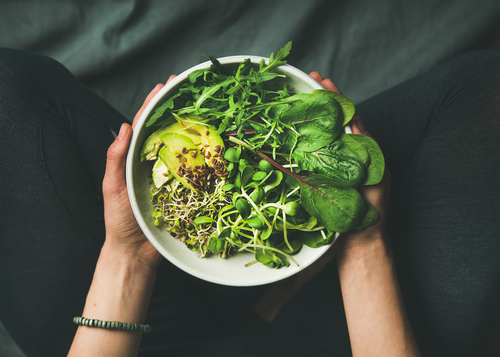By: Elisheva Blumberg, Lubicom Marketing Staff
How do you measure the passage of time?
For some people, a decade is measured by presidential elections, global news stories, or even the fashion trends that come and go.
At Kosher.com, our favorite way to mark time is by food trends.
In our fast-paced, Instagrammable culture, what’s considered super healthy can change in the blink of an eye… or rather, in the amount of time it takes you to guzzle down that Morning Matcha Green Tea Latte.
So, we’re giving tribute to the healthy food fads of the 2010’s.
Which ones do you remember?
2010: Gluten-Free

When gluten-free options are on nearly every restaurant menu, it’s hard to remember a time when gluten-free was relegated to a special aisle in the health food store.
The beginning of the decade saw a surge in people’s awareness of Celiac disease and gluten intolerances — so much so that the designation “gluten-free” became a stand-in for “healthy.”
Even people without gluten sensitivities began to adopt gluten-free diets as a way of eating healthier.
2011: Kale

Although kale was first cultivated for human consumption around 2000 BCE, it didn’t become a fad until celebrities and magazines started spotlighting it as the hippest and healthiest leafy green.
By now, though, it seems kale has overstayed its welcome. A recent Atlantic article proclaims that Google searches for the leafy green have declined dramatically toward the end of the 2010s.
2012: Chia Seeds

Anyone recall the 1980’s Chia pets fad?
Early in the decade, chia seeds underwent a health makeover — turning from a decorative plant to a superfood that people started sprinkling on everything from salads to oatmeal to Açaí Breakfast Bowls.
2013: Avocado Toast

It’s hard to tell precisely why the popularity of avocado toast skyrocketed. It’s just avocado smashed onto toast — nothing earth-shatteringly new there.
Some claim the transformation of the dish into a status symbol began when trendsetting actress Gwyneth Paltrow included a recipe for avocado toast in her 2013 cookbook.
2014: Spiralized Everything

The increased interest in vegetarian/vegan diets coupled with the gluten-free trend led to the wild popularity of spiralized veggies — and the spiralizing gadgets needed to do so.
People started spiralizing any vegetables that worked well with the preparation technique, including zucchini, parsnips, turnips, carrots, cucumbers, and beets.
Posting food photos on social media undoubtedly escalated the spiralized veggie trend (along with many trends over the decade) because of how gorgeous they appear in a photo.
2015: Bone Broth

Made by simmering beef or poultry bones for up to 24 hours, nutrient-rich bone broth became ultra-popular as a medicinal cure-all, with purported benefits ranging from improved digestion, better joint health, deeper sleep, and even clearer skin.
What helped make bone broth easier to make was the simultaneously trending Instant Pot pressure cooker, which drastically reduces the cooking time of the rich soup stock.
2016: Cauliflower Crust

In just a few years, cauliflower crusts have morphed from extremely niche to mainstream. Now it’s so popular it’s become a fixture on many pizza shop menus!
The mildly-flavored cruciferous veggie is approved on many of this decade’s trendy and plant-based diets, and it works well as a substitute for wheat flour and other grains.
2017: Kombucha

Though you may not have heard of kombucha until recently, the fermented tea is believed to have been invented in China over 2,000 years ago.
Kombucha’s popularity increased exponentially toward the end of the 2010s, when the fizzy drink became widespread for its purported health benefits. Made by fermenting tea with bacteria and yeast, kombucha is said to contain disease-fighting antioxidants and probiotics for gut health.
2018: Keto Diet

Also known as the ketogenic diet, keto was initially developed in the 1920s to treat epilepsy. But recently, the low-carb, high-fat diet has been resurrected as an extreme weight-loss diet.
In 2018, keto hit the #1 spot in Google’s rankings for searches on “diet”. And for food-related searches, keto recipes nabbed an incredible 5 out of the 10 top Google food searches.
2019: Going Vegan

If you’ve been following food trends over the past decade, you’ll have noticed the rise of plant-based foods on supermarket shelves, social media feeds, and restaurant menus.
From non-dairy cashew milk to non-meat Impossible burgers, the last ten years have been all about moving away from animal products and towards plant-based products.
It’s no wonder, then, that The Economist proclaimed 2019 “Year of the Vegan.”
Touted as the solution to protect animal welfare, the environment, and our health, many predict that the “going vegan” trend will continue to become even more mainstream in the coming years.
———————————————
We hope you had fun reminiscing about the last ten years of healthy food trends.
Here’s to a new decade of fun food fads and discoveries. We hope we can share them together at Kosher.com in the years to come!





